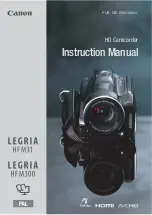
© INTEC Video Systems, Inc.
Revision F May 2013
8
4. The controller may be installed anywhere within
the cab or outside the vehicle provided you stay
within the available length of the controller to display
cable. (Installation outside requires the H or XL
controllers. Do NOT install the M controller outside.)
When selecting a location, make sure you have a
solid mounting surface and that the controller will not
come in contact with any of the vehicle’s electrical
circuits; as shorting to the controller’s metal
enclosure can occur.
Also be certain to keep the controller and the
controller-to-display cable away from any source of
significant heat (see the Operating Temperature
specs in this manual for the safe operating
temperature range).
5. The controller-to-display cable (CVDC6MA) and
the power harness are provided with the controller.
Install and connect the controller-to-display
cable and the remote control before connecting
the power harness to the controller
. The Power
(red), Reverse (blue), and Ground (black) wires on
the power harness need to be connected. The
ground wire should be connected first. To do this
simply locate a solid chassis ground and secure the
wire to it. Second should be the power. This should
be connected to a post ig11 to +32 VDC
power source. Finally, connect the reverse wire. It
should be connected to the reverse light circuit or
some other +11 to +32 VDC circuit that is only active
when the vehicle is put into reverse. When
connected properly this allows the system to come
on automatically when the vehicle is placed in
reverse.
Mount the remote so that it is easily accessible to
the driver. Please consult your INTEC
Representative with any and all questions regarding
installation.
6. Secure the display in the bracket (with the
mounting knobs provided) and adjust its positioning
as needed.
Camera Installation
For optimum field of view, mount the rear camera
approximately 10 feet up on the vehicle from ground
level so that the rear-most part of the vehicle is
visible at the bottom of the display screen. If this is
not possible, mount the camera in a fashion that will
give the driver the best possible view of the area
behind the vehicle while still aligning the rear-most
part of the vehicle with the bottom of the display
screen as a reference.
1. Establish a solid mounting location in the center of
the vehicle using the guidelines above. Make sure
that no part of the installation obstructs any lights or
any part of the driver's view.
2. Position the camera(s) with the mounting bracket
attached in the location where it will be mounted and
turn on the system to check the field of view (you
may have to reverse the camera’s mounting bracket
to obtain the proper angle). Be certain the field of
view of all installed cameras provides adequate and
appropriate coverage for your application.
3. Once the location and angle have been
determined, use the camera bracket or bracket
extension as a template to mark the position where
the holes will be drilled and drill the holes. Make
sure the area being drilled into is clear of all wires
and other items before you begin drilling.
0
.35"
0.22"
2.18"
4. Once the holes are drilled, install the camera
mounting bracket and extension, if required, with the
mounting bolts provided. You may need to purchase
additional hardware if the hardware provided does
not work in your application.
5. Mount the camera in the bracket with the
hardware provided and align it so that the rear-most
part of the vehicle is in line and viewable at the
bottom of the display screen.

































